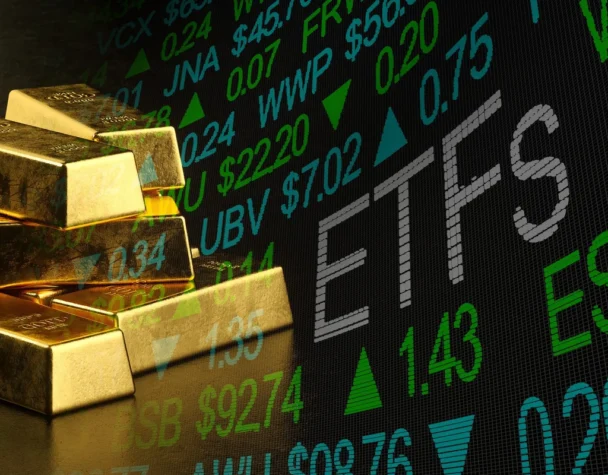
ETF Markets Shift on Tariffs, Gold Surge, and Global Trends
Mon, March 31, 2025As 2025 unfolds, exchange-traded fund (ETF) markets are experiencing dynamic shifts driven by geopolitics, global inflation hedges, and evolving investor behavior. From tariff tremors shaking U.S. equities to a rush toward gold and a notable uptick in international and active ETF flows, the ETF space is anything but static.
Tariff Announcements Stir Sector Volatility
The recent announcement by President Donald Trump of a sweeping 25% tariff on automotive imports, set to take effect April 3, has injected renewed volatility into the markets. The move has sent ripples across ETFs tied to trade-sensitive industries, including copper, lumber, and pharmaceuticals, with many investors scrambling to reposition holdings.
This protectionist pivot has raised concerns about global trade relations and supply chains, leading some analysts to warn of broader market instability. Industrial and materials-focused ETFs like the iShares U.S. Basic Materials ETF (IYM) have already registered noticeable fluctuations in daily volumes.
Meanwhile, ETFs linked to the automotive supply chain, such as Global X Autonomous & Electric Vehicles ETF (DRIV), are in the spotlight as investors gauge the potential impact on multinational car manufacturers and parts suppliers.
Investor’s Business Daily notes that these tariffs are arriving at a time when the U.S. economy is already navigating inflationary pressures and a mixed earnings season, heightening ETF market sensitivity.
Flight to Gold and Growing International ETF Appeal
Uncertainty in the markets has also triggered a renewed appetite for safe-haven assets—most notably, gold. Physical gold-backed ETFs like SPDR Gold Shares (GLD) have seen a surge in inflows as investors look to hedge against inflation, currency fluctuations, and geopolitical instability.
Analysts have raised gold’s long-term price target to $3,500, reflecting bullish sentiment and increased retail demand. A recent piece by The Wall Street Journal captures this growing gold bug mentality, pointing out that even first-time investors are flocking to the asset class via ETFs.
Simultaneously, international equity ETFs—particularly those tracking developed Europe—have experienced strong inflows. The Vanguard FTSE Europe ETF (VGK) and iShares MSCI Eurozone ETF (EZU) are gaining traction as investors diversify away from U.S.-centric positions amid fears of prolonged trade wars.
Canadian and Mexican equity ETFs have also outperformed U.S. counterparts, buoyed by stronger-than-expected sector performance in energy and mining, as well as optimism that North American trade disruptions may be less severe than initially projected.
Looking Ahead
ETF industry momentum continues to build, with 2024 having seen a record $1.6 trillion in global inflows and total ETF assets surpassing $15 trillion. This trend looks set to continue into 2025, especially with increasing adoption of active ETF strategies and alternative investment formats such as private equity and tokenized assets.
With the ETF landscape evolving rapidly, investors should stay informed and nimble, keeping an eye on macroeconomic signals and geopolitical developments that could impact allocations in real time.

